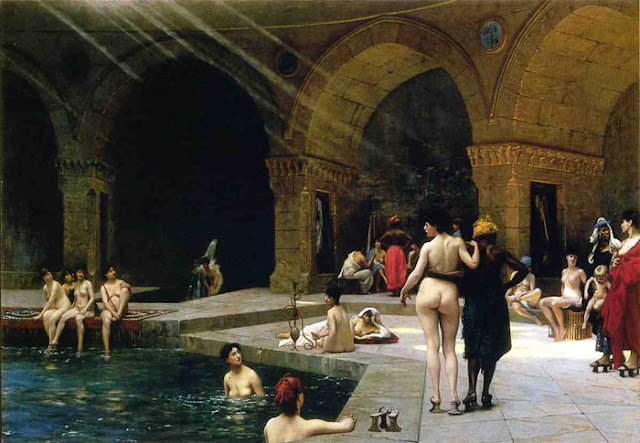I dreamed I was haunted and hunted by a murder of crows;
indicted by a parliament of owls and entertained by a gaggle of geese. These
are all poetic terms for groups of birds; their origins not completely known.
The case of the crows probably is in alignment with the fact that battle fields
have been known to be covered with the feasting carrion birds. I’m certain more
than one murder victim’s corpse has been found in the same manner. The crows
black feathers an ominous symbol of death and their song a cry of pain, far less
than alluring. A murder of crows in short has a “ring” that sounds remarkable
fitting and ideally distinct.

The crow is equally arresting in nature and in fiction.
Books, film and song feature the resourcefully clever creatures. Aesop was fond
of crows and found them useful in many of his illustrious fables, “The Crow and
the Pitcher, The Fox and the Crow and The Crow and the Swan” among them. Disney
used crows in his feature “Dumbo.” A flock (Disney would never have used the
word murder) of crows befriend the distressed elephant; help him to believe in
himself and his abilities. Disney’s Crows add humor, song, heart and compassion
to the film. The characters were also considered racially offensive and rife
with negative stereo-types. They remain debatable. Ralph Bakshi would use crows
in a similar but updated manner as did Disney in his adaptation of R. Crumb’s
“Fritz the Cat.” Bakshi’s films were much more satirical and “hipper,” they
were critical of every aspect of society and culture. Bakshi’s brilliance was
equal to Disney’s but drastically different and his target audience the radical
chic and the underground covet his land mark films.

Actor Johnny Depp has chosen to wear a hopefully taxidermist
crow as a headdress in the currently in theatres version of “The Lone Ranger.”
His impressive “Tonto Look” was inspired by a painting by contemporary artist
Kirby Sattler. The painting “I Am Crow” is a feat unto itself and Sattler’s
fame should increase exponentially with the film’s success. Depp in full makeup
is featured on the July 4-8 cover issue of “Rolling Stone” magazine. It will
take its place among the many iconic covers from the magazine’s remarkable
history of striking covers.
Painter Jamie Wyeth works almost exclusively from nature. He
is one of America’s most acclaimed and revered artists. Crows, along with their cousin’s ravens have
found their way onto a number of his canvases. These works are detailed to a
flaw and lovely to behold. Wyeth’s crow paintings are successful renderings
that illuminate the animal like no others.
"I Am Crow" by Kirby Sattler
James O’ Barr’s “The Crow” is the telling of a murder
victim’s rise from the grave and vigilante style retribution of his own and his
bride’s killers. It places Barr among the most revered of the graphic novel
form. The original film version released in 1994 starring the late Brandon Lee
became legend. Lee’s immersion into the character and his untimely death during
the actual filming have made “The Crow” a cult classic that remains engaging
and intriguing. The stylistic comic book, gothic-noir look of the movie is
unsurpassed to this day.
In as much as the crow informs and inspires the minds of the
creative they are in general among the least popular of birds. Think about the
scarecrow…what other bird has a thing named; invented and dedicated just to
ward it off. The scarecrow does honestly have a justification in that crows
destroy crops and are a general nuisance. There are few that don’t love a
singing and dancing scarecrow as portrayed by Ray Bolger in “The Wizard of Oz” and later by
Michael Jackson in the “Wiz.” Crows themselves are by most accounts not the
most beautiful of creatures especially considering the vast array of colorful
families of known birds. Crows while reviled are actually the cleanest of
birds, smart, loving and attentive as parents.

As I write this blog a giant crow has just landed in a tree
above me adjacent to my front porch, we are almost face to face. It is cawing
wildly and dangerously close. I have to admit he is a little “too close for
comfort.” I will have to chase him away.
It seems that the species is best viewed from a distance or through the
interpretation of fiction. The true
scientist would perhaps view this as a rare opportunity and a great vantage
point of observation. I do not. Why is it also in this moment of discomfort;
this feeling something of ill at ease, with it there is too a strange
validation; a degree of union to nature and in its oddity something akin to
Poe?
The Crow and the Pitcher
A crow, ready to die
with thirst, flew with joy to a pitcher, which he saw at a distance. But when
he came up to it, he found the water so low that with all his stooping and
straining he was unable to reach it. So he tried to break the pitcher, then to
overturn it, but his strength was not sufficient to do either. At last, seeing
some small pebbles at hand, he dropped a great many of them, one by one, into
the pitcher, and so raised the water to the brim and quenched his thirst.
Aesop
Moral: Little by little does the trick

















